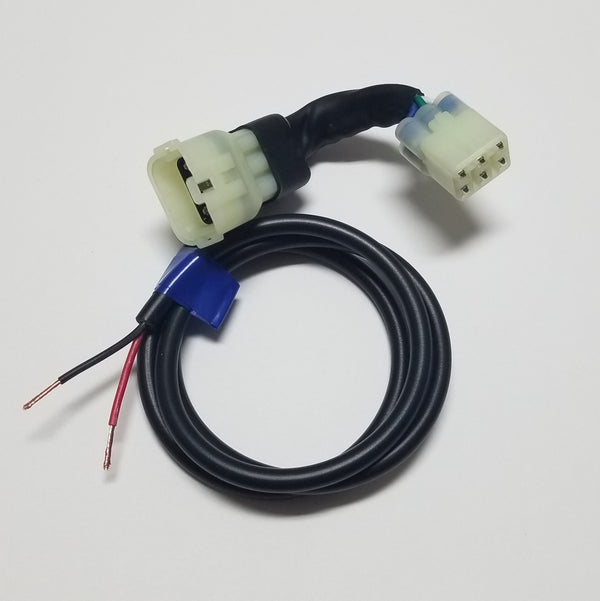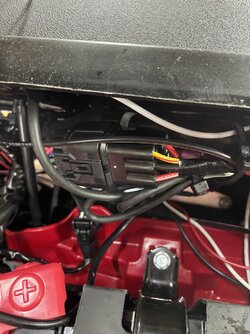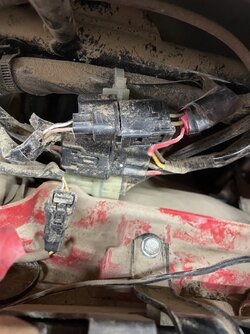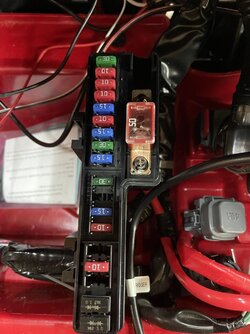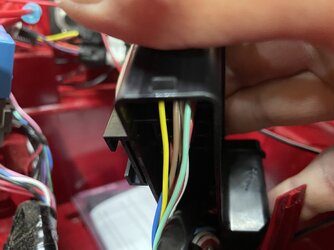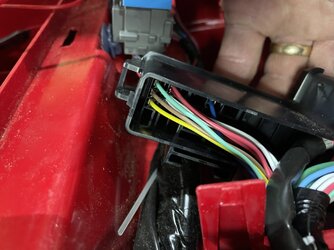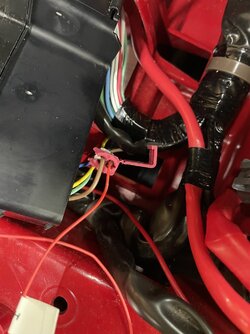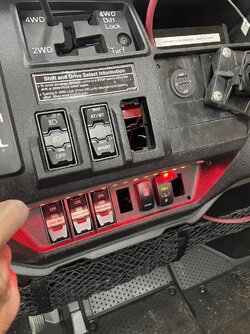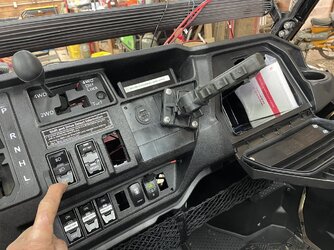D
While I know that the question I am about to ask had been discussed at length over the years here.... but grant an idiot some leeway please! I have recently purchased a new 2024 Pioneer (3) Dlx.... and going into some extensive (for me) modifications ... A lot of what I am doing is taking what I have done with my 2016 Pioneer - transferring the best of worked for me mods... and upgrading and changing out what wasn't the best.
One of the things that I didn't do on my old SxS... was have a auxiliary fuse Box (I have the Honda aftermarket fuse set up on new bike, with ignition on trigger)... previously on my True Battery isolater setup - i had 2 voltmeters... but they were "on" constantly.... along with my "lighted switches"... now anyone can say, those LED's dont draw much power... but if the SxS sat for extended periods... battery would die. (I keep on a Battery Tender - but still annoying)
ANYWAY.... i'm a week or two into doing the mods... but I have a couple wiring questions that I have tried to research... but all the previous explanations have confused me... i'm probably overthinking how difficult, or easy, what i'm trying to do is... but here are the 2 issues i'm having:
1) I have purchased a dual voltmeter (1 unit - 2 readouts).. that has 3 pins... 1 hot for each battery, and a common ground. I hear the term "negative relay"... I assume that's just the wiring term, not a different kind of Relay? So If I have a normal 4 (or 5 if I need that) pin relay... I assume I'm taking the 2 positive leads from the voltmeter to either side of the true isolater (thereby getting the readings from each battery), How exactly do I wire the Relay what goes on each pin (pin 30 / 87 /86 /85) so that the voltmeters only come on with "key on"??
2) Because Honda made the moronic decision to not "light" their switches on this SxS... I have installed a red (easy on the eyes) LED strip that willl light the switches... but I want it to only come on with the factory headlights. Where/how do I tie into that wiring... or fuse... that makes this work the easiest? I previously on my first Pioneer 1000 (8 years ago!) wired the 52" LED to only come on if the main lights were on.... but that was a pain in the butt... tapping into some wire beneath the factory fuses...
I know, I know... pictures.. pictures... pictures... Will do when it's complete.
Anyway... any and all help is greatly appreciated!
One of the things that I didn't do on my old SxS... was have a auxiliary fuse Box (I have the Honda aftermarket fuse set up on new bike, with ignition on trigger)... previously on my True Battery isolater setup - i had 2 voltmeters... but they were "on" constantly.... along with my "lighted switches"... now anyone can say, those LED's dont draw much power... but if the SxS sat for extended periods... battery would die. (I keep on a Battery Tender - but still annoying)
ANYWAY.... i'm a week or two into doing the mods... but I have a couple wiring questions that I have tried to research... but all the previous explanations have confused me... i'm probably overthinking how difficult, or easy, what i'm trying to do is... but here are the 2 issues i'm having:
1) I have purchased a dual voltmeter (1 unit - 2 readouts).. that has 3 pins... 1 hot for each battery, and a common ground. I hear the term "negative relay"... I assume that's just the wiring term, not a different kind of Relay? So If I have a normal 4 (or 5 if I need that) pin relay... I assume I'm taking the 2 positive leads from the voltmeter to either side of the true isolater (thereby getting the readings from each battery), How exactly do I wire the Relay what goes on each pin (pin 30 / 87 /86 /85) so that the voltmeters only come on with "key on"??
2) Because Honda made the moronic decision to not "light" their switches on this SxS... I have installed a red (easy on the eyes) LED strip that willl light the switches... but I want it to only come on with the factory headlights. Where/how do I tie into that wiring... or fuse... that makes this work the easiest? I previously on my first Pioneer 1000 (8 years ago!) wired the 52" LED to only come on if the main lights were on.... but that was a pain in the butt... tapping into some wire beneath the factory fuses...
I know, I know... pictures.. pictures... pictures... Will do when it's complete.
Anyway... any and all help is greatly appreciated!
Last edited:


